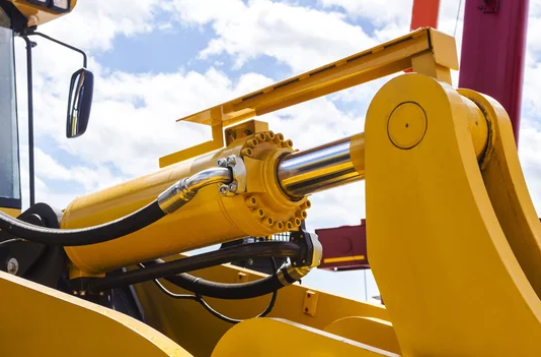
Hydraulic systems are the lifeblood of Grove cranes, powering every lift, swing, and extension with precision. The hydraulic pump is the heart of this system, and when it starts to fail, you’ll feel it—reduced efficiency, operational issues, and the threat of downtime.
Pump failure often starts with small signs that can escalate if ignored. Spotting them early can prevent major repairs and keep your crane running smoothly.
Here’s what to watch for and why it’s critical to act fast.
The Crane Feels Sluggish
You’re familiar with your Grove crane’s normal performance. If movements start to feel off—like a slow boom or a delayed swing—it’s a sign the hydraulic pump may not be delivering enough pressure. These early hints are easy to overlook but critical to address.
A struggling pump stresses the entire system, leading to faster wear and potential damage.
Unusual Sounds Are a Red Flag
Hydraulic pumps produce some noise, but new sounds like screeching, whining, or banging are trouble. These could mean cavitation—air bubbles in the fluid causing internal damage—or worn components grinding together.
Those noises are the pump’s cry for help. Running it longer risks a total failure.
Hydraulic Fluid Is Overheating
Heat is normal in hydraulic systems, but if the fluid is consistently too hot, the pump could be at fault. Overheating often comes from internal leaks or damaged parts forcing fluid through restricted paths, degrading the fluid and wearing out components.
Checking fluid temperature regularly can help you spot issues before they cause major problems.
Leaks Are Getting Worse
A minor drip is common, but large or frequent leaks are a problem. If you’re seeing fluid pooling under the crane or constantly topping off the reservoir, the pump’s seals or pressure regulation may be failing.
Leaks reduce efficiency and introduce air, worsening the problem. Don’t let them go unchecked.
Metal in the Hydraulic Fluid
During routine maintenance, inspect the hydraulic fluid. If it looks dark, shiny, or has metal particles, the pump’s internal parts are likely breaking down. That debris can travel through the system, damaging valves, cylinders, and filters.
Contaminated fluid means a bigger repair job. Act quickly to limit the damage.
Controls Are Unreliable
If your crane’s controls feel erratic—responsive one day, sluggish the next—the pump may not be providing consistent pressure. This affects precision and makes operation frustrating.
The issue might seem like a control problem, but the pump is often the source. Investigate it first.
The Pump Looks Worn Out
An old pump on a hard-working Grove crane is a liability. Check for signs of wear like corrosion, cracks, or damaged mounts. A pump in poor condition is close to failing, even if it’s still functioning.
Replacing it before it breaks prevents costly downtime and damage to other parts.
The Cost of Waiting Too Long
Some operators put off repairs to avoid immediate costs, but this rarely pays off. A failing pump can contaminate the entire system, damaging hoses, valves, and cylinders, and turning a simple fix into a major overhaul.
Addressing issues early minimizes downtime and keeps repair costs under control.
Sourcing Quality Parts
When replacing the pump, stick with genuine Grove crane parts from a reliable crane parts supplier. Off-brand parts may not match the precise specs needed for Grove cranes, leading to performance issues or early failure.
A supplier with expertise in Grove equipment ensures you get the right part fast, keeping your crane operational.
Act Before It’s Too Late
A failing hydraulic pump sends clear signals—slow performance, strange noises, overheating, leaks, or contaminated fluid. These are your crane’s warnings.
Don’t wait for a complete breakdown. Partner with a crane parts supplier who knows Grove crane parts to address issues early and keep your machine running smoothly.



